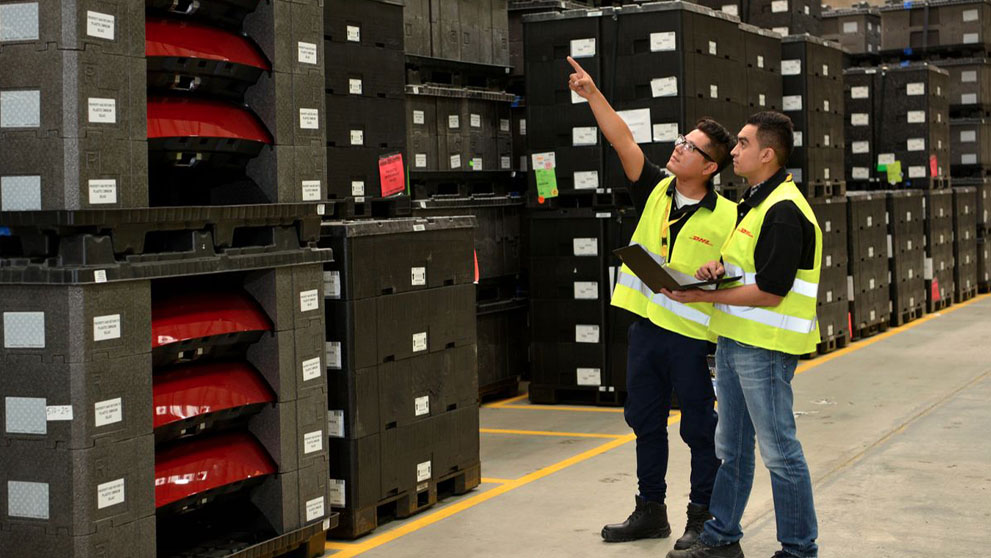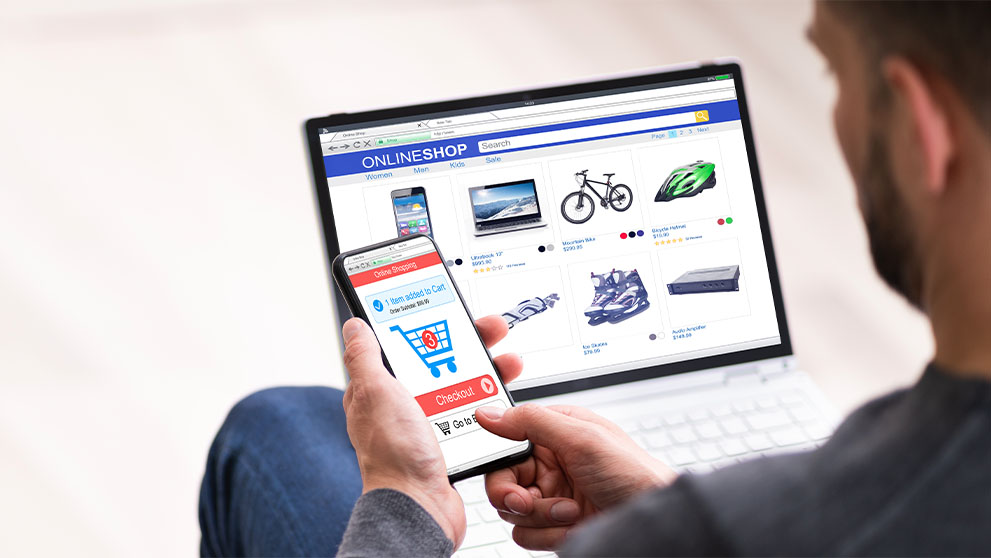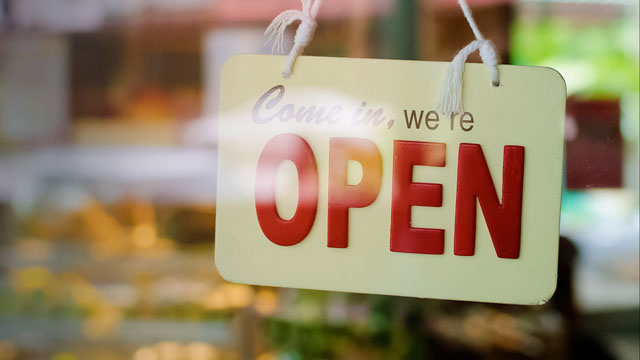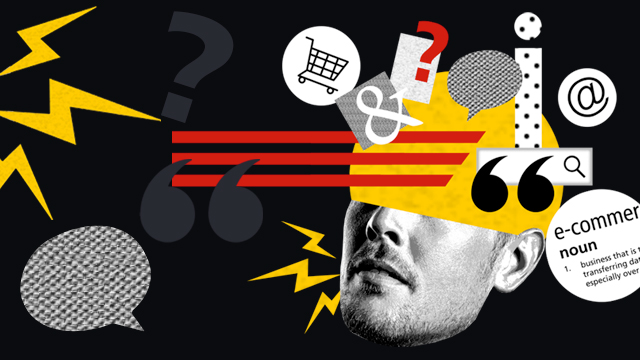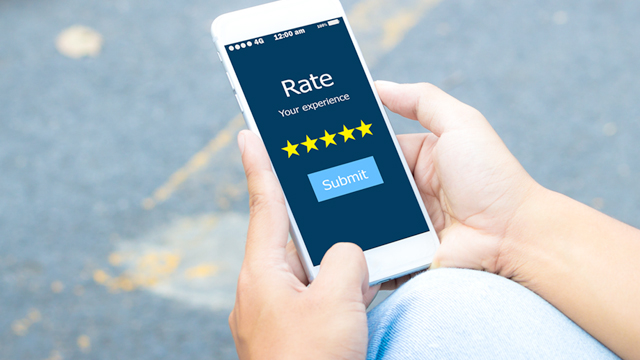Looking to step into the thriving and lucrative world of e-commerce? Our ultimate guide covers all the essential things you should know for success – including the types of e-commerce, the future of e-commerce, and the key to optimizing your business’s logistics operations.
Definition of e-commerce
If you’re wondering what e-commerce means, here’s the definition: E-commerce refers to the buying and selling of goods and services over the internet, offering the convenience of 24/7 availability and a global reach. Unlike traditional commerce, which typically involves face-to-face transactions, e-commerce allows businesses to connect with customers anywhere in the world.
With digitalization accelerating, online shopping is becoming second nature to billions. By 2024, an estimated 2.71 billion people — over a third of the global population — will shop online. E-commerce sales are set to exceed $6.3 trillion this year, with projections reaching $8 trillion by 20271, driven by growing internet accessibility and smartphone adoption.
The 8 types of e-commerce
When answering the question, “What is considered e-commerce?” It's important to understand the different types of transactions that can occur in the online space. Let's explore the 8 different types of e-commerce:
This is the most common e-commerce model, where businesses sell products or services directly to consumers. Examples include:
- online retailers
- grocery and apparel brands
- small businesses with their own websites
- subscription-based services like Netflix.
Which type of e-commerce is best?
For most entrepreneurs, B2C is popular due to its broad reach and direct connection with consumers.
This involves electronic transactions of goods and services between businesses. Examples include commerce wholesale, where the buyer then sells on to an end customer (B2B to B2C). B2B e-commerce is a fast-growing sector; typically, negotiations would have been done in person, but much of it is moving online due to digitalization.
This type involves the electronic transactions of goods and services between consumers. These e-commerce transactions are typically conducted via a third-party online platform, like eBay or Facebook Marketplace.
This is where consumers sell their products or services to businesses. Examples include online influencers selling ad space on their blog, or a photographer selling their images to businesses via a dedicated platform like Shutterstock.
B2G refers to businesses providing goods or services to government entities. This often includes bidding on government contracts or offering technological solutions tailored to public sector needs.
C2G involves consumers engaging with government services online. Examples include paying taxes, filing applications, or submitting payments for public services like parking tickets through digital portals.
In this type of e-commerce, governments sell products or services to businesses. An example would be government entities offering data, contracts, or services to businesses, often through online platforms.
G2C involves governments providing services directly to citizens online. This includes tax filings, license renewals, or applying for social services through internet-based portals.
Benefits of e-commerce
Any small or existing business looking to grow should make e-commerce a central part of their strategy. It’s a lucrative opportunity, and setting up an online store has never been easier. The many benefits include:
- It’s growing – and fast: E-commerce is rapidly reshaping global retail. In 2024, it’s expected to account for 20.1% of all retail sales; by 2027, that figure will rise to 22.6%. With global e-commerce sales set to exceed $6.3 trillion this year, the industry shows no signs of slowing down. As the Internet and smartphone usage continues to grow, especially in developing regions, the potential for further expansion is vast2.
- Low operating costs: Setting up an online store is much more affordable than a bricks-and-mortar outlet, without the need to pay for rent, store design and staff. Budding e-commerce entrepreneurs can start small, selling on an online marketplace like eBay, which has relatively low risks associated. There are also many low-cost marketing tools at your disposal – setting up a brand page on Instagram, for example, is free, and is a powerful way to engage with thousands, if not millions, of potential customers.
- Global reach: Thanks to the growth of international shipping, opening your online store to the world has never been easier. Of course, this requires some market research into which countries are hot buyers of your products, and ensuring your e-commerce website is customized for local buyers (think language and payment methods). Still, the opportunity to maximize your sales is vast.
- Powerful customer data: You can’t improve your business without knowing your customers, and this is where e-commerce As an online seller, you’ll have access to invaluable behavioral data about your customers: how they arrived at your website, what products they were searching for, where their engagement was highest, what made them abandon a cart – all of which you can utilize to continually improve your business and maximize sales.
Key components of e-commerce
When setting up an online business, these are the most important components of a successful e-commerce business strategy.
Customer engagement
Customer engagement refers to building and nurturing strong relationships between your business and customers across all online touchpoints. It involves creating meaningful consumer interactions to drive satisfaction, loyalty, and repeat business. In the context of e-commerce, customer engagement can occur through your website, social media platforms, email marketing, and customer support channels.
Several tools can improve customer engagement:
- Live chat and chatbots: Offering instant customer support and answering real-time queries.
- Personalization: Tailoring product recommendations and marketing content based on browsing history and preferences.
- Loyalty programs: Rewarding repeat customers with discounts or exclusive offers, encouraging them to return.
- Email marketing: Sending personalized offers, abandoned cart reminders, and product recommendations.
Successful customer engagement leads to improved customer satisfaction, increased sales, and long-term brand loyalty.
Website and Design
Your website is the face of your brand – but its importance goes beyond its aesthetic appeal. A golden rule of e-commerce to abide by is: well-designed websites can enhance user experience and improve conversion rates. Visitors expect a fast, intuitive experience, otherwise they’ll abandon your site. Research shows that 38% of people will stop engaging with a website if the layout is unattractive or difficult to navigate3. Moreover, a slow loading page can increase bounce rates by 40%3 , and a poorly designed checkout process can lead to cart abandonment.
To improve your website’s design:
- Optimize page loading speed to reduce bounce rates.
- Simplify navigation to help visitors find what they’re looking for easily.
- Use responsive design to ensure your website is mobile-friendly.
- Create a seamless checkout experience to reduce cart abandonment and improve conversions.
Online payments
In today’s global e-commerce landscape, offering a variety of payment options is essential for businesses to meet customer expectations and prevent cart abandonment. Research shows that 60% of shoppers4 will abandon their cart if they can’t use their preferred payment method. To keep your customers engaged and transactions flowing, providing multiple payment options is important.
Popular payment methods around the world include:
- Credit cards (Visa, Mastercard, etc.)
- Digital wallets (PayPal, Apple Pay, Google Pay)
- Bank transfers in regions like Europe and Asia.
- Buy Now, Pay Later (BNPL) services such as Afterpay, Klarna, and Sezzle, are gaining traction in many markets.
For more tips, consider diving into our guide to the new ways to pay.
Dynamic pricing
This involves changing the prices of your products based on market trends, supply and demand, inventory level and customer expectations. Being flexible with your pricing strategy is key to remaining competitive in the e-commerce market – for example, price matching a competitor’s products.
Today, there are many AI-powered technology platforms that can monitor your inventory to find the optimal price points for your products, based on demand. This will benefit your business and your customers.
Supply chain
The supply chain is the entire network involved in the sourcing and procurement of raw materials, conversion of those materials into finished goods, and the distribution of those finished goods. As an e-commerce business, you may work with several partners along the supply chain, so maintaining regular communication is key to anticipating hurdles and putting plans in place – such as if a supplier is going to be late with one of their deliveries to you.
An agile supply chain can quickly adapt to market changes, anticipate spikes in demand, and meet customers’ delivery expectations – here are our tips.
Logistics
Logistics is the part of the supply chain your business is responsible for and covers procurement, inventory management, distribution, warehousing, transportation, packaging and risk management. For small businesses in particular, logistics should be considered essential to reducing costs, staying competitive and getting products to customers on time.
There are an increasing number of technologies available to help your business optimize operations – for example, software to improve the efficiency of your warehouse layout, and route planning software to reduce your transportation costs. Here are a few to consider.
Returns
It’s an unfortunate downside of e-commerce that products are frequently returned by consumers. But before you skip this section, consider this: 67% of consumers will check an online retailer’s return policy before committing to a purchase5, so taking returns seriously is key. In fact, it’s so important that we’ve written a whole article about it – including a free returns template with everything your customers will expect.
Challenges of e-commerce
It wouldn’t be a complete e-commerce article without acknowledging some of the challenges of the sector. The key is to be aware of them and stay one step ahead!
Customer experience
Customers’ expectations of their online experiences are growing – keeping up with them can be demanding and expensive. For example, 66% of shoppers now expect free shipping on every order they make online7, whilst 88% want brands to help them be more environmentally friendly8. And these examples are just a couple of many. Yet, investing in customer experience is vital for your business – remember, it’s cheaper to retain a loyal customer than acquire a new one!
Competition
E-commerce is fiercely competitive – whatever you’re selling, the chances are there are countless other online businesses out there offering the same.
By conducting a thorough competitor analysis, you can learn best practices to market and sell more effectively, and identify gaps in the market your business can pivot to meet.
So, what are your business’s strengths? Where are you falling short of your competitors? And what strategy should you take to improve? Our free competitor analysis template will help you find the answers.
Website and conversion
The average e-commerce conversion rate in 2022 – that is, the number of orders versus visits to a website – was between 2 to 4%8. This may seem underwhelming, but there are steps your online business can take to improve it. Your website analytics will show you at which point your customers are abandoning their shopping carts or dropping off your site. Perhaps you are losing them when you ask them to register an account – in this instance, introducing “Guest Checkout” could be transformative. Optimizing your website will be a continual task but worthwhile in improving your conversions.
Shipping and logistics
Shipping plays a critical role in the success of any e-commerce business. Customers now expect fast, reliable, and often free shipping options, and delivering a seamless logistics experience — from order placement to delivery — is key to keeping them satisfied. DHL Express makes this easier by integrating its services directly into your e-commerce platform.
With DHL Express’ shipping integrations, you can automate processes, offer real-time tracking, and provide flexible delivery options that meet your customers’ needs. These data-driven solutions streamline logistics, reducing errors and enhancing the overall customer experience.
International shipping
Taking your e-commerce business global can open new revenue streams, but international shipping comes with its own set of challenges—customs, taxes, and varying delivery times, to name a few. This is where partnering with a logistics provider can make all the difference.
For instance, DHL’s global network and expertise in handling customs and regulations make it easier to ship worldwide. With flexible international shipping options, your business can offer reliable cross-border deliveries, ensuring customer satisfaction no matter where your buyers are located.
How to make money from e-commerce: 5 revenue models
E-commerce opens up a variety of ways for businesses to generate income. By exploring these revenue models, you can find the approach that best suits your e-commerce business and supports sustainable growth.
1. Sales model
The sales model is the most straightforward way to make money online. You sell products or services directly to your customers and earn revenue from each transaction — whether it's physical goods, digital downloads, or services. Success with this model depends on setting competitive prices that cover your costs and leave room for profit.
2. Subscription model
The subscription model is increasingly popular and for good reason. This approach lets you charge customers a recurring fee — monthly, quarterly, or annually — in exchange for ongoing access to your products or services. It provides a steady, predictable income and builds long-term customer loyalty. Think subscription boxes, streaming services, or SaaS platforms.
3. Advertising model
If your website attracts significant traffic, the advertising model could be a lucrative option. You can monetize your site by displaying ads and earning revenue based on views, clicks, or conversions. By partnering with advertisers, you generate a passive income stream, allowing you to focus on growing your audience and business.
4. Affiliate model
With this model, you earn commissions by promoting other companies' products or services. By partnering with relevant brands and featuring their products on your platform, you earn a percentage of sales made through your unique affiliate links.
5. Transaction fee model
In this model, you make money by charging a fee for each transaction that happens on your platform. This approach is common in online marketplaces, payment gateways, or platforms where users buy and sell goods. The fee can either be a fixed amount or a percentage of the transaction value.
Current trends in e-commerce
The e-commerce landscape is constantly evolving, and staying ahead of the curve is essential for your business to thrive. Here are some of the most prominent trends shaping the future of online retail:
Mobile shopping
With smartphones at the center of our daily lives, mobile shopping is skyrocketing. Customers expect a smooth experience across devices, so making sure your online store is optimized for mobile is essential. Responsive design and easy-to-navigate checkouts will help ensure your customers can shop effortlessly on the go.
Flexible payment options
Offering a variety of payment methods can significantly improve the customer experience and boost sales. From traditional credit cards to digital wallets and buy-now-pay-later options, providing flexibility caters to a wider audience and removes potential barriers to purchase.
Personalization
Today’s shoppers expect personalized experiences. Using data and technology to deliver tailored product recommendations, special offers, and content can increase engagement and encourage repeat business. It’s a simple yet effective way to boost loyalty and conversions.
Augmented Reality (AR) enhancing the shopping experience
AR is changing the game for online shopping. With AR, customers can visualize products in their own space or virtually try on items, bringing a more interactive, real-life experience to online shopping.
The future of e-commerce
What does the future of e-commerce hold? And what does that mean for your business’s growth strategy?
Omnichannel retail will continue to grow
The way online consumers shop is often a complex journey involving several different channels. They may research a brand on Instagram, compare prices on an online marketplace, then complete the purchase on a brand’s dedicated mobile app. The challenge for businesses is to ensure these different touchpoints work together; 57% of shoppers want a personalized and consistent experience across all10. Check out our tips for success, here.
AI for automation
AI is transforming the way e-commerce businesses operate, driving cost savings, efficiency, and improved customer satisfaction. It's not just about robots in warehouses — AI is also revolutionizing how companies interact with customers.
This will include intelligent chatbots offering 24/7 support, answering questions, and guiding shoppers through their purchase journey. AI can also sift through massive amounts of data to forecast demand, keeping popular items in stock, and delivering personalized product recommendations that truly resonate with individual shoppers.
Ultimately, AI helps e-commerce businesses scale effortlessly, process more orders without hiccups, and provide faster, more efficient customer service. These are critical components for success in today’s fast-paced e-commerce world. Discover the full breadth of exciting innovations transforming the e-commerce industry with our exclusive Logistics Trend Radar.
Increasing importance of sustainability
Sustainability is no longer a "nice-to-have"— it's becoming an essential for e-commerce businesses. Customers are increasingly choosing brands that commit to eco-friendly practices, from sustainable packaging to reducing carbon emissions across the entire supply chain.
And it’s not just about being good for the planet. Research shows that companies with a climate-conscious approach often experience faster growth and higher conversion rates11. So, adopting sustainability isn't just the ethical choice — it's also a smart business strategy.
How to succeed in e-commerce
Achieving success in e-commerce takes strategic planning, customer-centric operations, and the ability to adapt to the ever-changing digital landscape. Here are four key areas to focus on for sustainable growth and profitability:
1. Invest in marketing and customer acquisition
Growing your e-commerce business starts with attracting the right customers. Investing in marketing strategies like SEO, PPC ads, social media campaigns, and email marketing can significantly increase your visibility. Targeted marketing ensures you reach the right audience, driving traffic to your store.
2. Provide excellent customer service
Customers want fast, helpful responses and seamless interactions. Add live chat, chatbots, or detailed FAQs to help customers find answers quickly. Make returns easy, keep customers updated on their order status, and maintain clear communication throughout the buying process. Great service leads to repeat customers and positive word-of-mouth.
3. Streamline inventory and fulfillment
Efficient inventory management and fulfillment are important in achieving e-commerce success. Use inventory management tools to track stock levels and prevent overselling. Partnering with a reliable logistics provider, like DHL Express, ensures that your products are delivered on time and in perfect condition.
4. Adapt to industry trends
Keep an eye on emerging trends, whether it’s using AI for personalized shopping experiences or optimizing your site for mobile-first design. Sustainability is also a rising priority for consumers, so consider integrating eco-friendly practices and logistics into your operations.
E-commerce FAQs
An example of e-commerce is a small, independent candle brand selling directly to customers via its own website. It may also sell on an online marketplace like Etsy, and have Instagram Shopping enabled so that its social media followers can make purchases easily. These online transactions would all be considered e-commerce.
The "best" type of e-commerce depends on your target audience, business goals, and product or service offerings. For most small to medium-sized businesses, B2C (business-to-consumer) is the most common and effective model, allowing direct sales to consumers through online platforms. B2B (business-to-business) can be highly profitable for businesses that supply products or services to other firms.
For entrepreneurs focusing on individual sales, C2C (consumer-to-consumer) platforms like eBay or Facebook Marketplace are ideal. Ultimately, the best type of e-commerce is the one that aligns with your business strategy and market needs.
Various e-commerce platforms cater to businesses of different sizes, including:
- Shopify: A user-friendly platform to build and run an online store.
- Magento: Known for its customization and scalability features, making it ideal for larger businesses with complex needs.
- WooCommerce: A popular WordPress plugin that is suitable for small- to medium-sized businesses looking to integrate e-commerce into their existing website.
- BigCommerce: A powerful platform with a variety of built-in features, suited for businesses seeking to grow quickly.
- Wix: A beginner-friendly website builder that includes e-commerce functionality.
Yes! Now is the time to take the leap and spread your entrepreneurial wings. There’s a lot to consider, but one thing DHL can handle for you is the logistics, ensuring your customers get their orders on time and in great condition – wherever they are in the world. Start your journey with a DHL Express Business Account, today.
Ready to take your e-commerce business to the next level?
As e-commerce continues to expand, understanding the different types of e-commerce, the key factors for success, and the challenges that come with it is essential. By focusing on optimizing customer engagement, having a well-designed website, and offering smooth online payment options, your business can thrive in the online marketplace.
1 - Sellers Ecommerce, accessed September 2024
2 - Sellers Ecommerce, accessed September 2024
4 - Checkout, accessed September 2024
5 - Invespcro, accessed March 2023
6 - Small Business Trends, June 2021
8 - Shopify, accessed September 2024
9 - Linkedin, accessed September 2024







